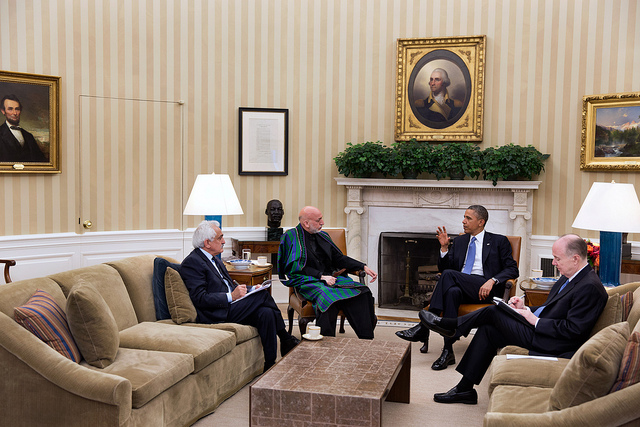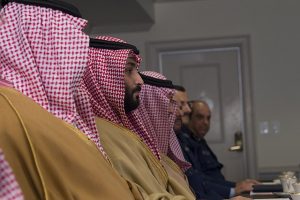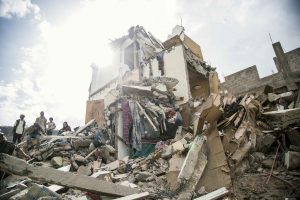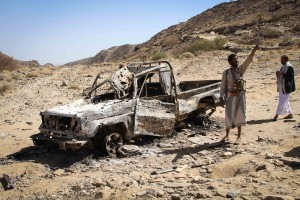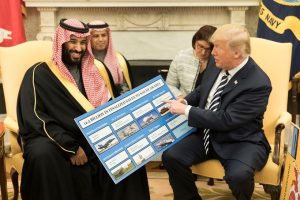by Henry Precht
Two US service members were killed and at least eight others injured Monday in an insider attack at a Special Forces site in Afghanistan. The Taliban asserted responsibility. This incident would seem to nullify President Hamid Karzai’s earlier charge that US and Taliban forces were colluding to bring down his government.
The incident — and Karzai’s outburst — certainly did nothing to alter President Barak Obama’s determination to close out our war against al Qaeda and their former hosts and rulers of Afghanistan, the Taliban. By December 2014, the White House has said, our combat operations will have withdrawn and the Afghan government will be more or less on its own. How is this end game to be managed? Perhaps speaking for himself, the top general for the region, Gen. James N. Mattis, told Congress last week that 20,000 troops should remain after 2014.
I asked two experts separately for their views. One served in Afghanistan in the 1960s as a political counselor and the other returned last year from a lengthy assignment that included a period as deputy ambassador.
Here’s what the old timer had to say:
By December 2014 we will have done about all that can be accomplished with regard to (1) al Qaeda (the reason we went into Afghanistan in 2001) and (2) the Taliban insurgency — without the full support of Pakistan. That country’s tribal belt along the Afghan border provides rest and training for both of our adversaries. Our forces, particularly the Marines in Kandahar Province, have badly injured the Taliban and drone attacks have decimated al Qaeda’s leadership which has largely refocused its activities in the Yemen and East and North Africa. The remaining task for our forces is strictly training of the Afghan army and other security forces. Before that can be a reality, however, the Afghan government will have to give American troops (perhaps up to 10,000) legal immunity under a Status of Forces Agreement (SOFA) that the Loya Jirga (a national assembly) must pass. Inevitably, our presence has started to rankle many Afghans, some of whom view us as another occupation force like so many in their history. The Loya Jirga’s debate and vote will be a fateful decision on how we are now perceived by the Afghan people, how confident they are that they alone can successfully contend with the Taliban and handle all the conflicts and rivalries in what is still a very traditional and tribal society.
Turning to the new boy:
The number of our troops who remain should be governed by their missions (and by the SOFA we manage to negotiate with the Afghan government). I see two missions for the post-2014 US military presence: training the Afghan National Army and counterterrorism (going after al Qaeda remnants.)
As the most recent casualty figures reflect, the Afghan Army has taken over the great bulk of the fighting. But they will still need our training, mentoring and assistance in several “high end,” “enabler” areas as the US military likes to call them: medical response, search and rescue, intelligence and its exploitation, logistics, high end equipment maintenance, their fledgling air force and — most important — civilian casualty avoidance. (We have learned a lot in this area.) The Brits, Italians, Germans, Lithuanians and others all have niche expertise to apply to this project, but we have to lead and coordinate with the Afghan government.
Numbers? I’m not a military expert, but would guess that somewhere between 10 and 20,000 will be necessary. They should be based in a few regional centers around the country for economies of effort and Afghan public perceptions.
Civilian complementarity: It’s absolutely essential that we NOT cut back to the bone our USG civilian programs in development, good governance and justice and exchanges as our military presence substantially declines. Even with all the nation’s corruption and poor governance, much social and economic progress, as well as human rights advances especially for Afghan women, has been made these past 12 years. As we have learned in other trouble spots: “there’s no security without development and no development without security.” A leaner but still robust US civilian presence and programs will do much to reassure very anxious Afghans, some of whom are still fence-sitters. Afghans have long memories, and while Afghanistan has changed much since the Soviet withdrawal, some draw parallels. Perceptions matter.
What about Pakistan? — insurgent safe haven, role in the emerging peace process involving the Taliban, the Talibanization of some parts of its territory, nuclear weapons, relationship with India — all matter tremendously, especially for Afghan prospects, but that’s a subject for another day.
There you have it, facts and informed opinions to chew on as the debate over our role in Afghanistan rumbles and rattles on in Washington. Left out of these Foreign Service judgments are any discussion about what American public opinion will tolerate and, perhaps most important, what price for continued engagement our budget will support.
Photo: President Barack Obama and President Hamid Karzai of Afghanistan participate in a bilateral meeting in the Oval Office, Jan. 11, 2013. Dr. Rangin Dadfar Spanta, Afghan National Security Advisor, left, and National Security Advisor Tom Donilon, attend. (Official White House Photo by Pete Souza)

